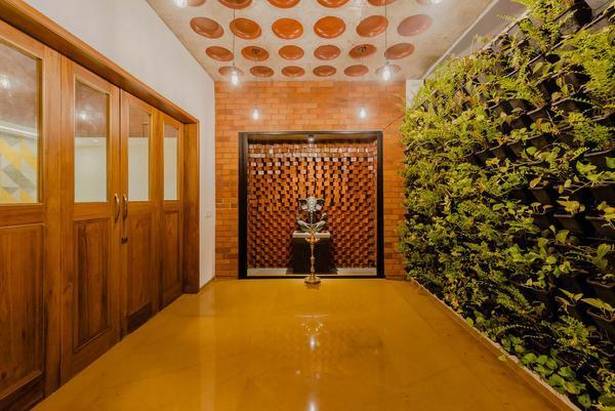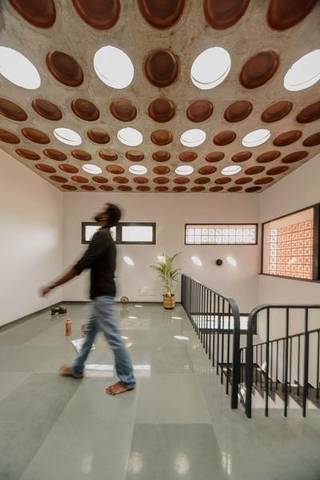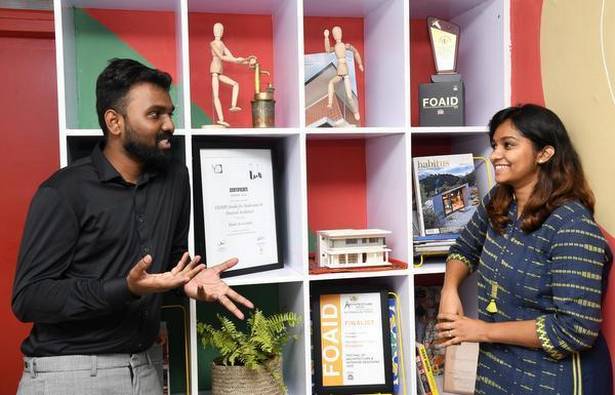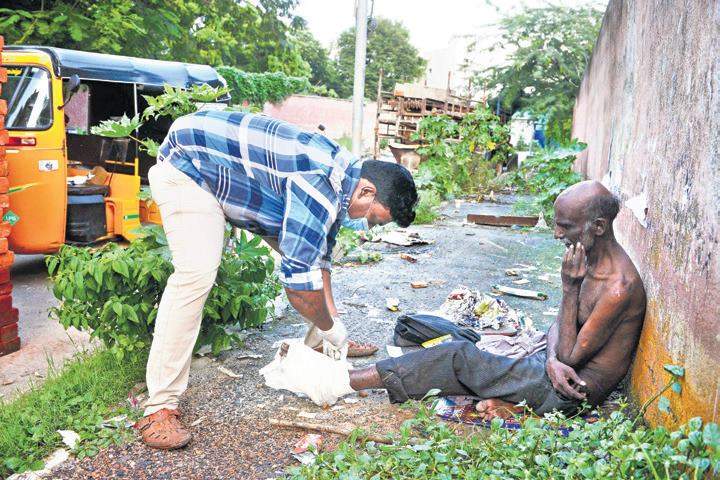07
06
05
04
The world on a string: Violinists Ganesh-Kumaresh duo and Florian Willeitner
In a lengthy interaction, the artistes spoke about their style and schooling – that they will look to bridge and unify into something truly harmonious.
German violinist, composer, arranger and Founder of the artistic collective, Pool of Invention, Florian Willeitner was in the city for a very special performance – conceptualised and hosted by the Goethe-Institut along with Rotary Club of Madras East – titled, Classical Strings Violinkonzert, along with the renowned duo of Ganesh and Kumaresh. The medium of exchange was the violin. In a lengthy interaction, the artistes spoke about their style and schooling – that they will look to bridge and unify into something truly harmonious.
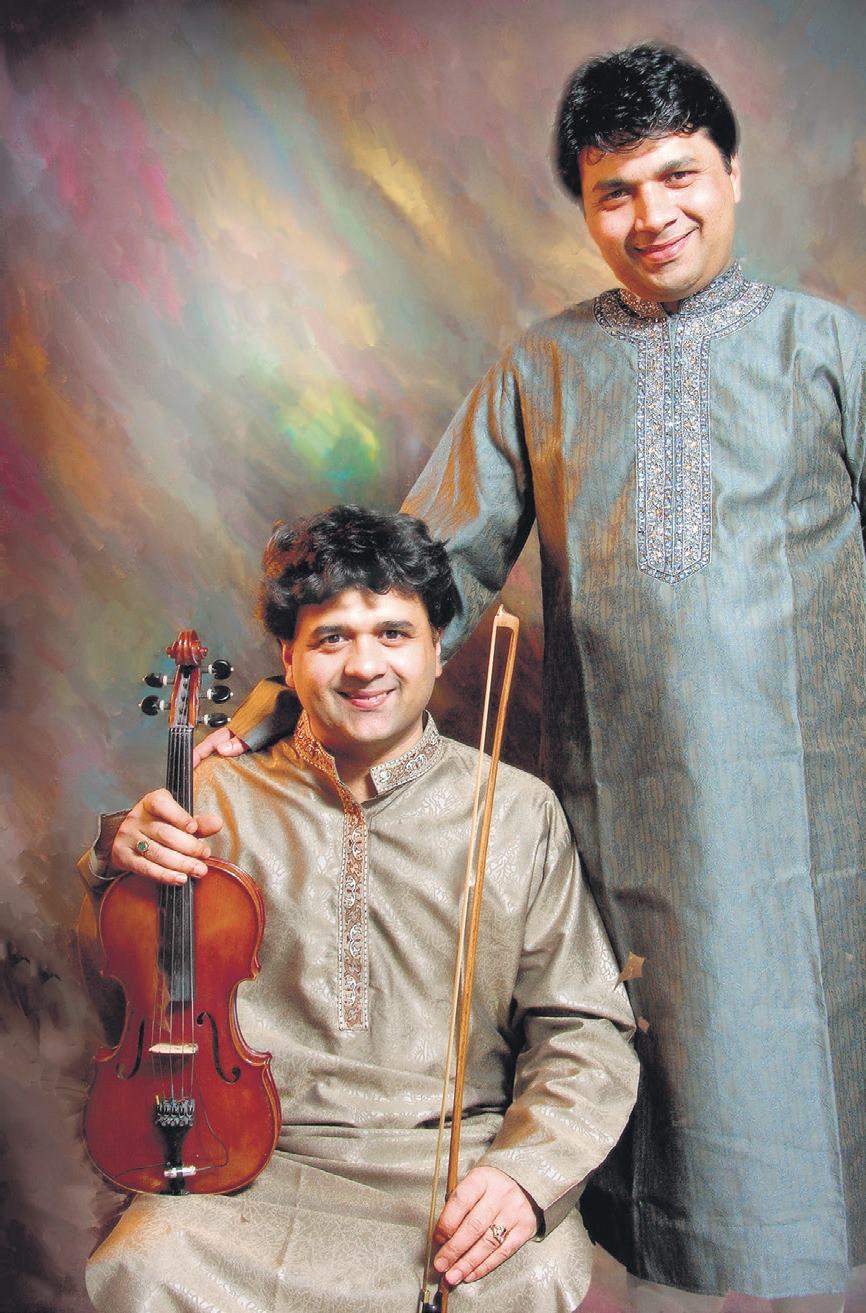
Excerpts:
Importantly, how have you been keeping out the sounds of firecrackers?
Ganesh & Kumaresh: Our motherland reflects a life of celebration. We deal with various kinds of sounds at the most critical junctures, so dealing with the sounds of the festival is a joy. We believe in the concept of internal silence while the rest of the world is still alien to that concept. So, the sound of firecrackers is musical to us.
Florian: It is, of course, necessary to rehearse in a space where we can fully concentrate on the music. Also, the Goethe Institut’s hall is a very good room to rehearse. There weren’t any rehearsals taking place on Diwali, so no firecrackers came in our way. Actually, I was practising in my hotel room on these days, and almost died of several heart attacks, as there were detonations all over the place… but luckily, I survived!
All three of you were music scholars at a young age. Give us a sense of how similar, or different, your study routines were?
G&K: The discipline in formative years is of paramount importance for a free-spirited exploration in the romance with musical days. Freedom without discipline is an open recipe for disaster in any walk of life, and it is the same with music as well…
FW: I am grateful for the strictness of Western classical education, as I see it as one of the best ways to actually, really get to know your instrument in every technical aspect. I dislike the absence of creativity in this tradition though, as the main focus is on interpreting written music by composers. Therefore, I have always been looking for creativity through other musical styles and approaches, and I am now fighting very much to bring creativity back to Western classical education.
How difficult or easy has it been, to bring together your styles, and schools of music?
G&K: When two personalities from different cultures meet, there are bound to be differences. Music by default is an indivisible medium – it is the human mind and the society that has divided the sound of music like this and that. So, we found a way in which there’s a musical synergy to what we presented, so the audience got to listen to a very new, dynamic and traditional sound of music!
source: http://www.newindianexpress.com / The New Indian Express / Home> The Sunday Standard / by Jaideep Sen / November 03rd, 2019
02
The house in a coconut grove
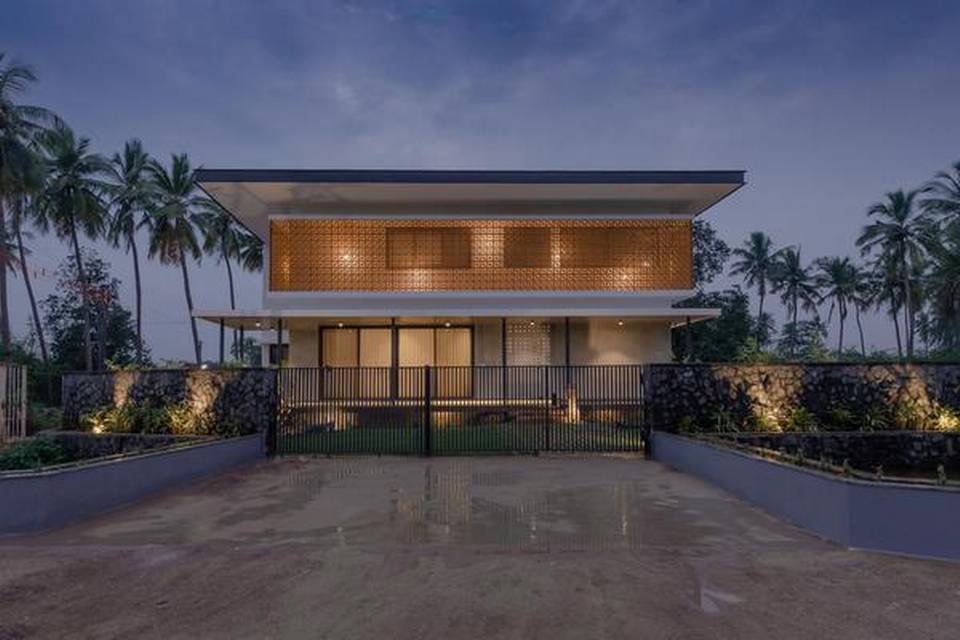
Madurai architects Vignesh Sekar and Shamini Lakshmanan are winning global attention for a climate responsive Chettiar House they built in Thiruppathur near Madurai
One national award, five nominations (including four international) and nine articles in appreciation in journals of repute over the last 10 months have put architects Vignesh Sekar and Shamini Lakshmanan in the spotlight; a feat they never imagined to win at 25.
In fact, both were set to go overseas for higher studies after completing a challenging project in Thiruppathur, 64 kilometres East of Madurai, last November. “The client wanted a house with contemporary aesthetics while combining the cultural essence, traditional architecture and context of his native Chettinad region,” says Vignesh. “We debated and researched a lot, developed a timeline and came up with several innovative low cost ideas. It turned out to be much above everybody’s expectations,” says Shamini.
Until then, they mostly worked on public spaces in Hyderabad, Chennai and Bengaluru. However, their first major project was in Madurai in 2016 when immediately after graduating from Thiagarajar College of Arts, they were commissioned by the Madurai Corporation Commissioner to transform the abandoned Bharathiyar Park.
___________________________
- The house was built in the middle of a grove of 200 plus coconut trees. Only three were felled as they were damaged but were used for concrete shuttering.
- A lotus pond at the entrance has a crocodile sculpture made with stones collected from the site. Big boulders from the surroundings have been used as steps to climb on to the front verandah. Stones of different shapes and sizes have been moulded into a statue that works as a railing to the steps.
- The main door to the house is seamless matching the facade of the wall. It is made with finest form of marble, egg whites and white cement. The interior walls have leaf imprints of the trees in the vicinity
- Instead of a big puja room, a smaller one has been built with a big lounge that can accommodate more peopleand one side wall has a vertical garden to purify the air
- The terracotta jaalis that dapple the light and thermally insulate have been fool proofed for security. Iron rods have been inserted in each brick and the bricks have been further twisted and shaped for aesthetics
- The design of the house is complemented by rustic finishes like the exposed concrete on the ceilings, a combination of wood and Athangudi tiles on the floors
__________________________
“Encouraged by the positive feedback we received, we submitted it to the Arch Daily, a social forum and an online magazine from New York,” says Vignesh, “but it was rejected.” But there was an upside to it. Impressed by their design , the owner of a hotel in Thiruppathur approached them to design his dream house over 5,000 sq.ft. inside a coconut grove. “He told us not to mimic the Chettinad architecture but retain the spirit of a Chettiar house, in terms of lay-out and play of natural light and air,” says Shamini
Combining aesthetics with contemporaneity, the architects consciously chose to be sustainable and vernacular. “We started from the scratch in July 2017 and handed over the project in November 2018. After Arch Daily wrote about the house in January this year, the recognition from various associations, platforms.i
Combining aesthetics with contemporaneity, the architects consciously chose to be sustainable and vernacular. “We started from the scratch in July 2017 and handed over the project in November 2018. After Arch Daily wrote about the house in January this year, the recognition from various associations, platforms and publications has been overwhelming,” says Vignesh.
So much so that the duo have not only postponed their idea of studying overseas but also opened an office in Madurai two months ago for their company STOMP (Studio for Modernism & Practical Aesthetics).
“Till now, we were mostly travelling and working from home but now international agencies ask for our official address while approaching us for articles and awards,” notes Shamini.The duo has won the Young Designers Award 2019 given by India Architects & Builders (IAB).
So what is special about the building they created? “We incorporated an earthy palette of native materials either sourced from the site or from within 50 kilometres and juxtaposed them with traditional aspects of Chettinad region like its colours, fabric and (Athangudi)tiles. We employed local labour and artisans for every aspect of the work,” notes Vignesh. “We stuck to the client’s brief howsoever difficult it appeared,” adds Shamini.
For instance, the owner chose a large front yard to the typical open courtyard and wanted the three layers of a typical Chettinad house to remain — the public frontage in the front called the thinnai; the semi public area in the centre (like the puja and living room and the dining area) and the private bedrooms at the farthest end. The terracotta facade of the building and the skylights on the first floor ceiling allow natural play of light and ventilation and minimise use of electricity. The house runs on solar power and there are only four fans installed. Customised clay pots in the skylight made from the soil at the site reduce the temperature by five degrees.
“There was a purpose in the enhanced spatial, functional and permeable structure we planned and executed for a lifetime living experience”, says Vignesh, “and we are glad that it is garnering attention,” says Vignesh. “We faced our challenges gracefully and the awards are fuelling our passion now,” adds Shamini.
A WINNING DUO
They are among the top three contenders and the only ones from South India for the FOAID (Festival of Architecture & Interior Designing) -2019, a genex competition for young designers. From 250 submissions, they were among the six shortlisted in the first round. The finalist will be announced on November 29.
Their design was among the 20 selected projects from around the world and only one from India featured in the 45th issue of Australian publication, Habitus Living in September-November 2019. They also made it to the top five in one of the categories that describes the designers as champion paying attention to materiality.
It has been shortlisted for the prestigious Women In Architecture Awards – the only Indian project on the list that includes some of the world’s most important practitioners.
From 500 entries it was one among four Indian teams to have been shortlisted among top 100 for the Merit List 2019 announced by Cycle by Matter.
Out of 550 projects from 54 countries, it has been shortlisted for Continental Architectural Awards 2019 in Spain
source: http://www.thehindu.com / The Hindu / Home> Life & Style / by Soma Basu / November 01st, 2019
A ‘blessing’ for the homeless
Every morning D Arul Raj wakes up with one goal — to rescue at least one homeless person and put a roof over his/her head.
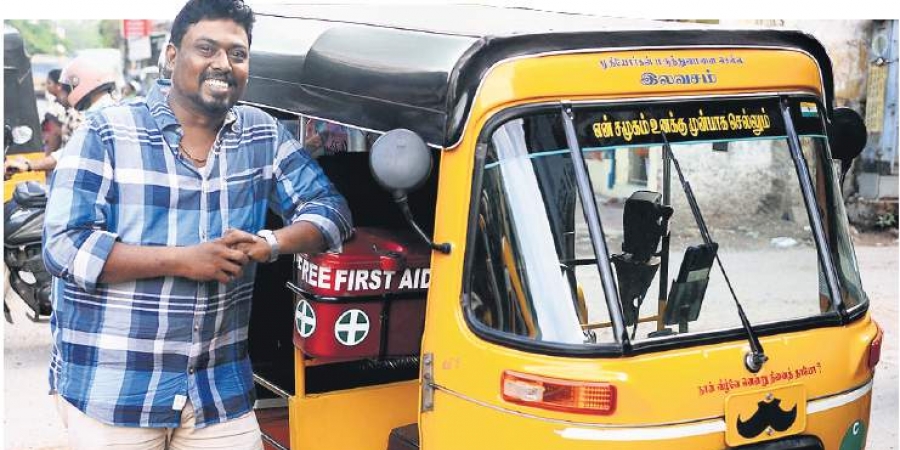
Chennai :
Every morning D Arul Raj wakes up with one goal — to rescue at least one homeless person and put a roof over his/her head. He drives his autorickshaw, picking up savaaris for four hours each in the morning and evening, and the rest of the day he goes around the city to look out for homeless people who need help. Arul founded the Karunai Ullangal Trust two years ago to help abandoned people. So far, he has rescued more than 320 people.
On Tuesday, when we were waiting to talk to Arul, he gets a call telling there is someone in Perambur who needs his help. The 34-year-old autorickshaw driver doesn’t think twice before getting into his vehicle, asking us to hop on and zooming past the city.
How it all began
“I have a wife and two children. Till 2015, I had no intentions of doing social service. During the floods that year, my wife received an emergency call from one of her friends at Saidapet. He told her that they were starving and were unable to get out of the locality due to stagnation. I brought food to their place only to realise there were hundreds who needed help,” he says.
Using a push cart, Arul ferried people out of the area. That’s when he first felt the need to help a fellow human being. “It was the amount of trust they had on me that shook me. I then joined a Facebook page and a WhatsApp group called Makkal Ku Udhavalam, created especially to help people during floods. Requests for help kept pouring in and I did what I could,” he says.
Arul was then working in the collection department of a private bank. He would go from house to house to collect bank dues. However, when the office management realised he was busy with social service for most part of the day, they fired him in 2016. Arul was jobless for six months. “We worked for six months after the floods on cleaning and providing relief materials. After six months, when the admin of Makkal Ku Udhavalam decided to delete the page, I decided to manage it and changed the name to Karunai Ullangal. Simultaneously, that was when I lost my job,” he says.
Goal oriented
From helping cancer patients to poor children getting scholarships, Arul did everything he could. One day, towards the end of 2016, a woman on the roadside in Saidapet asked him if he could help her join a shelter home.
“I did not even know what a shelter home was until then. Earlier too, during floods, a woman had asked me the same, but I could not help her. But this request made me take the step to rescue the homeless and this changed my life forever,” says Arul. In January 2017, he received a call saying an injured homeless man was lying by the roadside and that he might die if they don’t help him soon. “This time, I took help from different NGOs and enrolled him in a private shelter home at Porur at 1.30 am. When that sense of satisfaction kicked in, I decided this is what Karunai Ullangal Trust will do from then on — rescue homeless and enrol them in a home.”
Daily routine
For each rescue, the fuel costs alone comes up to Rs 500. When Arul did not have a job, his friends and volunteers stepped up. “Each month, we were doing about ten rescues and I did not want to depend on them forever. So, I bought an autorickshaw in 2017. A dear friend of mine gave me `90,000 and the rest of the amount, I am paying through installments every month,” says Arul.
From then till now, Arul’s daily schedule has been the same. Ride the autorickshaw from 6 am to 10 am, carry out rescues from 10 am to 6 pm and again ride the autorickshaw from 6 pm to 10 pm before he heads home to spend time with his family. Of the people they have rescued, 120 have been reunited with their family, while others are in different shelter homes across the city. Now, Arul funds most of the rescues himself.
Alarming stories
While carrying out the rescues, Arul says he found some incidents alarming. “One day in 2018, I saw a distressed man on the roadside in Tambaram with a shabby long beard, torn clothes and his face covered in a thick layer of dirt. Talking to him, I found out that he was a film director who took to the roads after his wife divorced him and kids did not support him,” says Arul.
It is often common issues that lead to situations like this, he says. “Next time you find a distressed person, talk to them. Most of them have homes, but they don’t go because there are no loving people inside that house,” says Arul, as he swipes through the pictures of rescued people on his phone.Learning first-aid Pointing to a huge first aid box attached to his seat, Arul says that he is also trained in first-aid. Often, when they head out for a rescue, the notice that the victim’s legs and hands are infested by maggots due to living in unhygienic conditions and with diabetes. The 34-year-old learned first-aid, so he could clean their wounds before taking them to shelter homes.
As he shares his story, we reach the place of rescue. Outside Perambur loco station, we see an old man lying in his own feces, and his feet were half eaten by worms and maggots. Arul gets down and quickly takes the mask, gloves and other necessary equipment out of the first-aid box and runs to the man. He talks softly to him, consoles him as he cleans the wounds. Within an hour, he convinces him to go to a home, and four hours later, he was admitted. Arul looks at us and says, “This is the best part of my day.”
‘App’solutely helpful
Arul also introduced the Karunai Ullangal Trust mobile application on Google PlayStore in September. The app lets public upload pictures of the abandoned people and assigns volunteers for the rescue.
It also has a database of all the rescued people so that you can help them find their family if you know someone. If you want to report/help a homeless person on the roadside, contact 9841776685
source: http://www.newindianexpress.com / The New Indian Express / Home> Cities> Chennai / by K.V. Navya / Express News Service / October 31st, 2019
